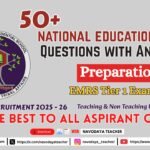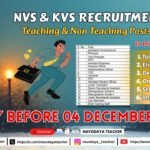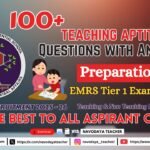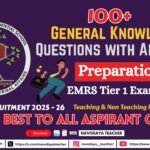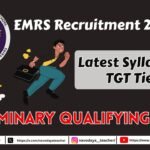In this article we providing information regarding latest 4 Marks Practice Questions with Answers for CBSE Class 10 IT Exam 2025
4 Marks Practice Questions with Answers for CBSE Class 10 IT Exam 2025
We are providing Practice Questions and Answers for Upcoming CBSE Class 10 Information Technology Exam 2025.
Questions and Answers as Below.
1. Describe the process of grouping drawing objects in Writer.
Answer – Following are the steps to group the drawing objects :
- Draw four or five drawing objects.
- Select the object by clicking over it.
- Hold the Shift key and keep on selecting all other objects by clicking on it to be included in the group.
- Once all the objects are selected, click on Format > Group > Group. Or Click on the Group button on the Drawing Object Properties toolbar. Or Right-click and select Group from the context menu.
- All the selected objects will be grouped.
2. Explain how Solver differs from Goal Seek and when it’s more appropriate to use Solver in a scenario.
Answer – Solver represents a more comprehensive version of Goal Seek. While Goal Seek focuses on adjusting one input value to reach a fixed outcome, Solver can deal with equations having multiple unknown variables. In Goal Seek, you can manipulate one input cell after the outcome or target is fixed. However, in Solver, you can manipulate a set of cells after knowing the desired output. It allows you to estimate the minimum or maximum values that can be placed into these cells to achieve your objective. Solver is particularly designed where you want to either minimize or maximize a result according to a set of limiting rules defined by the user. Each of these rules sets up whether an argument in the formula should be greater than, lesser than, or equal to the entered value. If the argument need not to be changed, set the rule so that the argument in the cell is equal to its current entry.
3. Explain what a cell reference is and its significance in spreadsheet applications like LibreOffice Calc.
Answer – A cell reference refers to a single cell or a range of cells in the current worksheet, another worksheet, or within the same spreadsheet. It allows you to access the values stored in those referenced cells and perform calculations by applying formulas to them.
- You can use a cell reference to refer to :
- Data from one or more contiguous cells on the worksheet.
- Data contained in different areas of a worksheet.
- Data on other worksheets in the same spreadsheet.
4. Explain three benefits of using a Database Management System (DBMS) in handling data.
Answer –
- Reduction in Data Redundancy :
- Data redundancy occurs when the same data is duplicated in multiple places, leading to inconsistencies and inefficiencies. DBMS helps eliminate redundancy by storing data in a centralized manner. For example, in a non-DBMS system, if you have to update a customer’s address, you must do it in multiple places. In contrast, DBMS maintains a single customer record, reducing errors and saving storage space.
- Reduction in Data Inconsistency :
- Data inconsistency arises when different copies of the same data don’t match, causing confusion and errors. DBMS ensures data consistency by making sure all data instances reflect the same information. For instance, imagine a company has different departments storing employee information. Without DBMS, the same employee’s salary could be different in various records, leading to payroll discrepancies. DBMS enforces consistency across departments.
- Data Integrity :
- Data integrity means that data is accurate and reliable. DBMS checks and enforces data rules to maintain integrity. For instance, you might have a rule that says “a person’s age can’t be negative.” If someone tries to enter a negative age, the DBMS stops it from happening, ensuring data accuracy and trustworthiness.
5. How should you monitor air quality ?
Answer –
- Identify Pollutants : Determine which air pollutants are most relevant to the work environment. Common pollutants include carbon dioxide (CO2), carbon monoxide (CO), VOCs, particulate matter and humidity levels.
- Choose Monitoring Equipment : Select appropriate devices to measure air quality. These can include air sampling pumps, particulate counters, gas detectors and humidity meters. Some workplaces may also use sensors that continuously monitor and provide real-time data on air quality.
- Conduct Initial Assessments : Perform an initial assessment to establish baseline air quality levels. Monitoring may be conducted at different times of the day and across various locations in the workplace to get an accurate picture. (iv) Set Thresholds and Standards : Establish acceptable thresholds based on health and safety regulations or industry standards. For example, OSHA provides permissible exposure limits (PELs) for certain air contaminants.
We will add more Questions and Answers Be Connected and Visit Again
Thanks to Beloved Readers.



